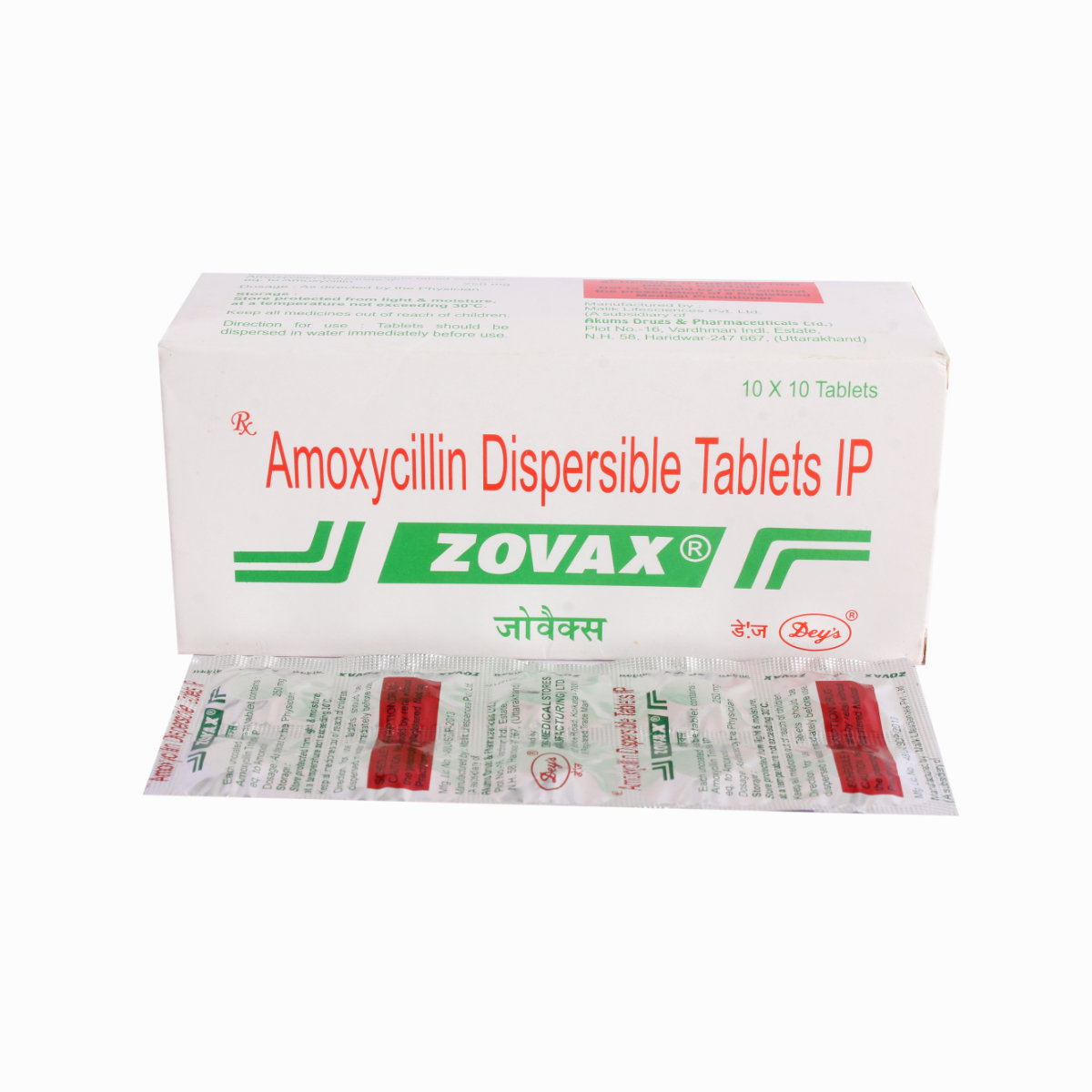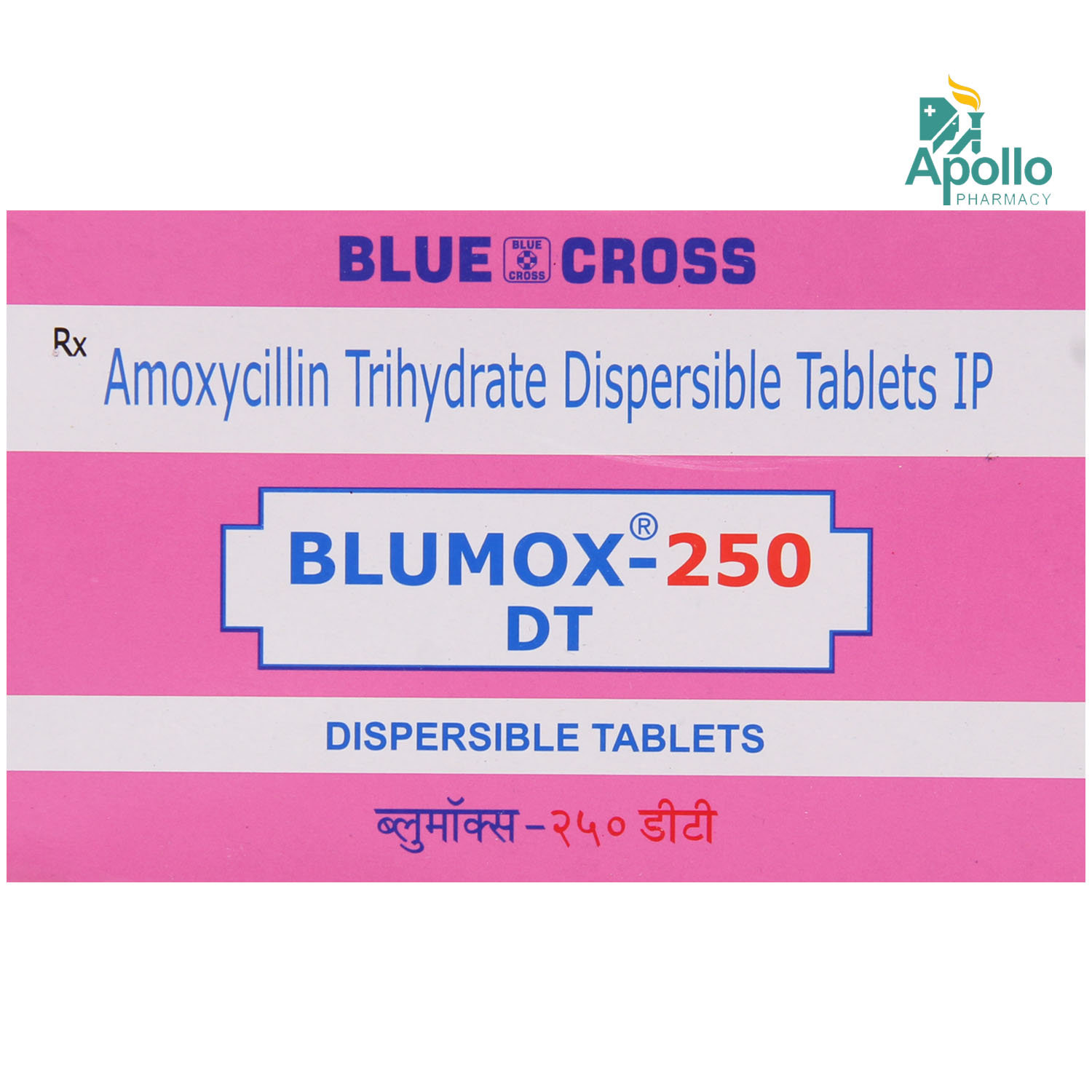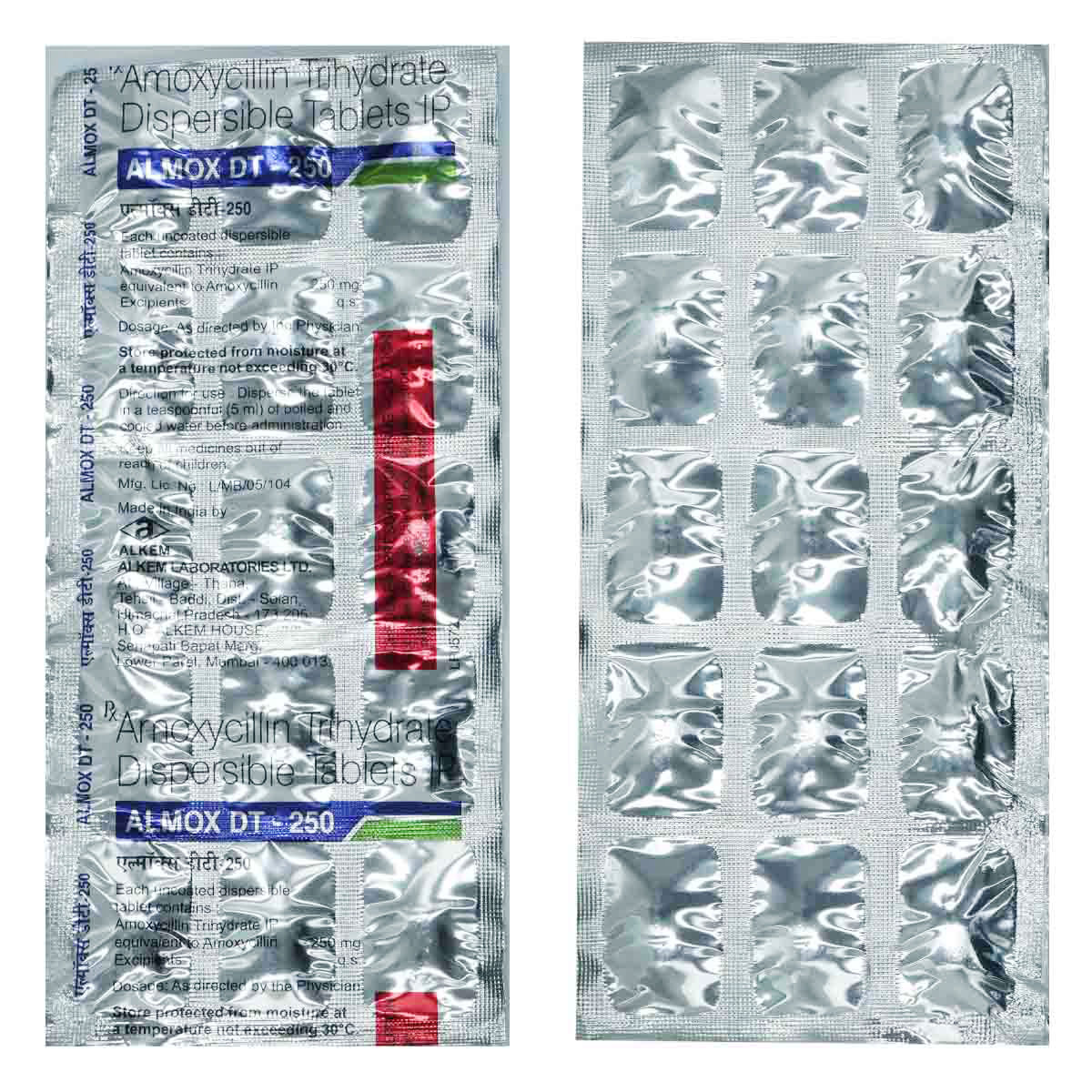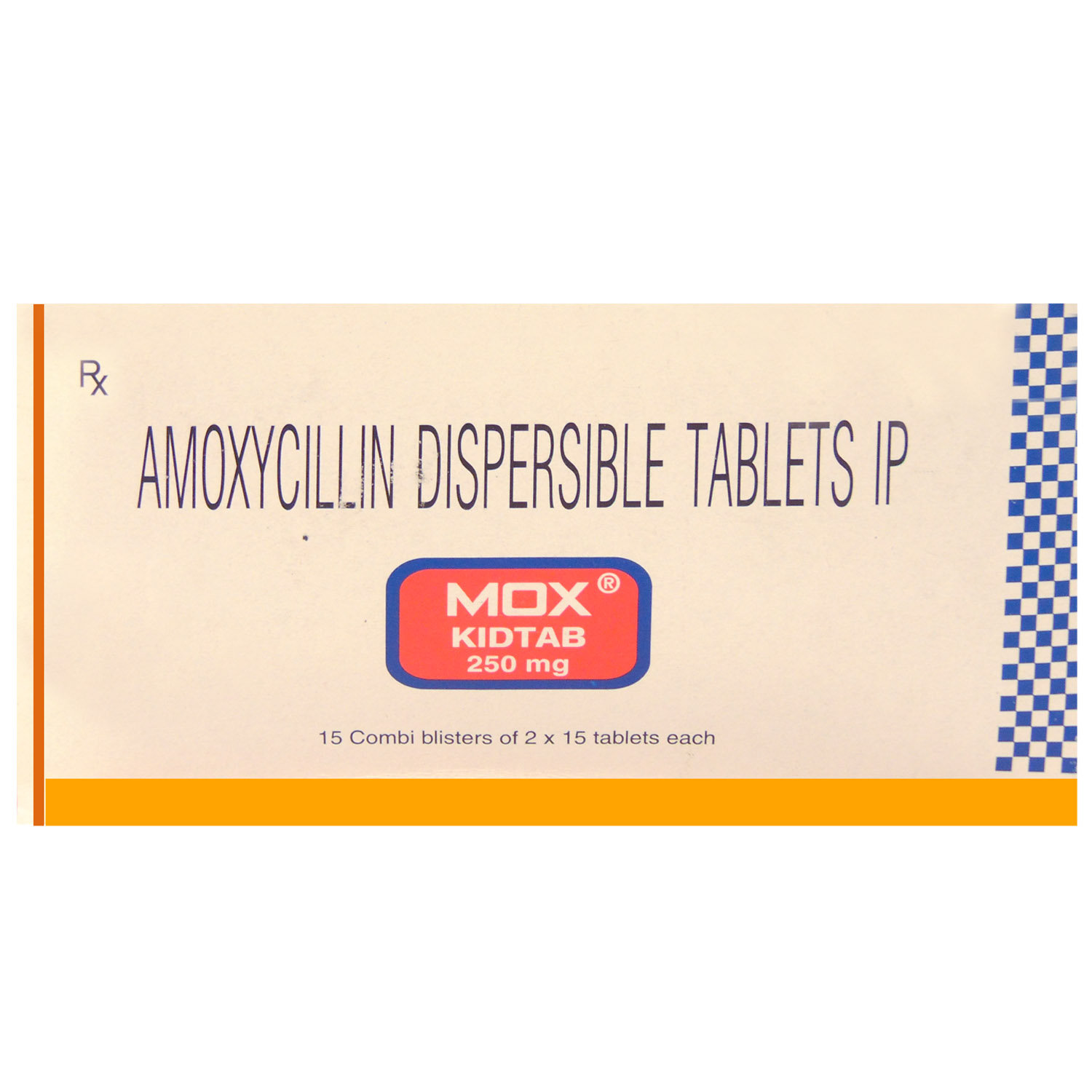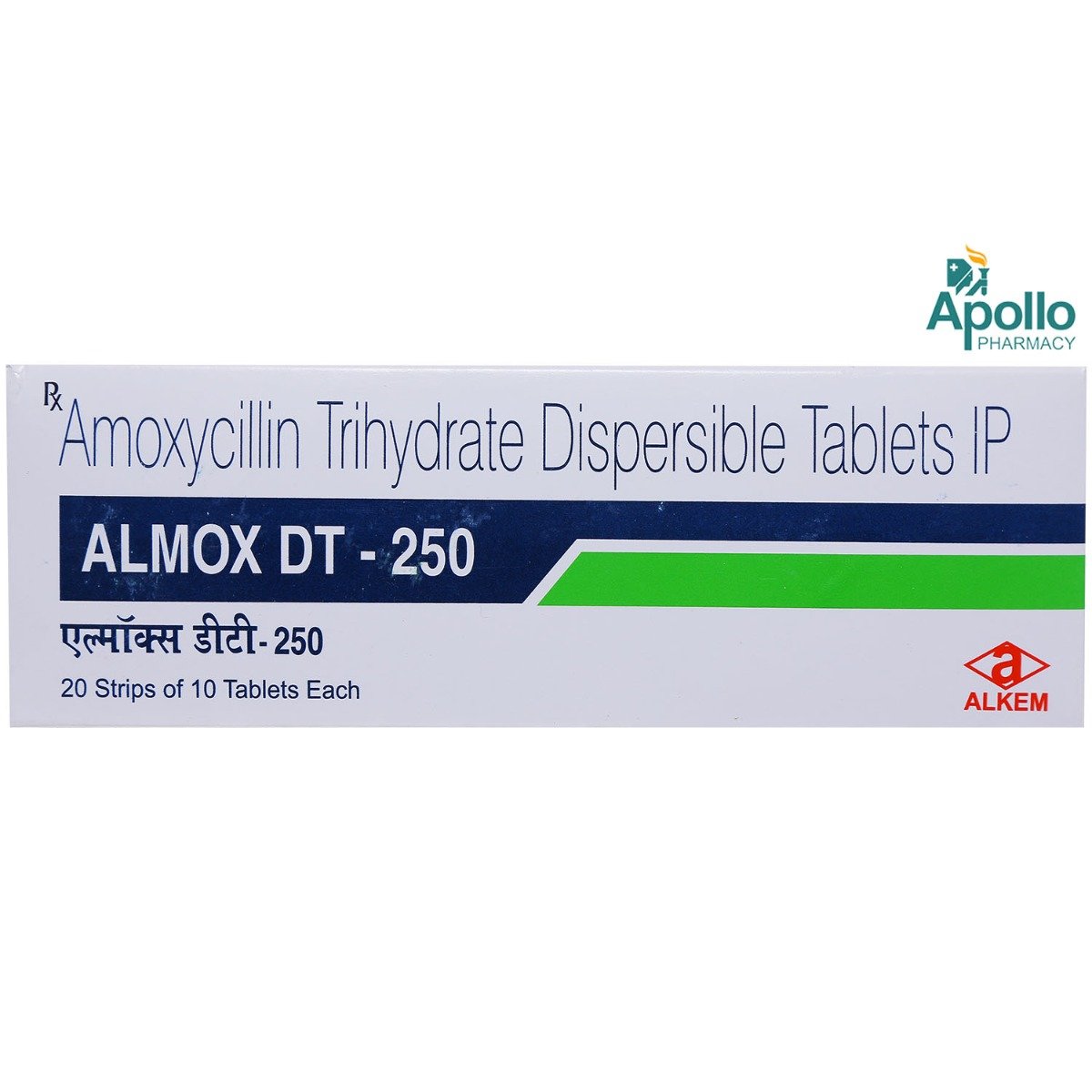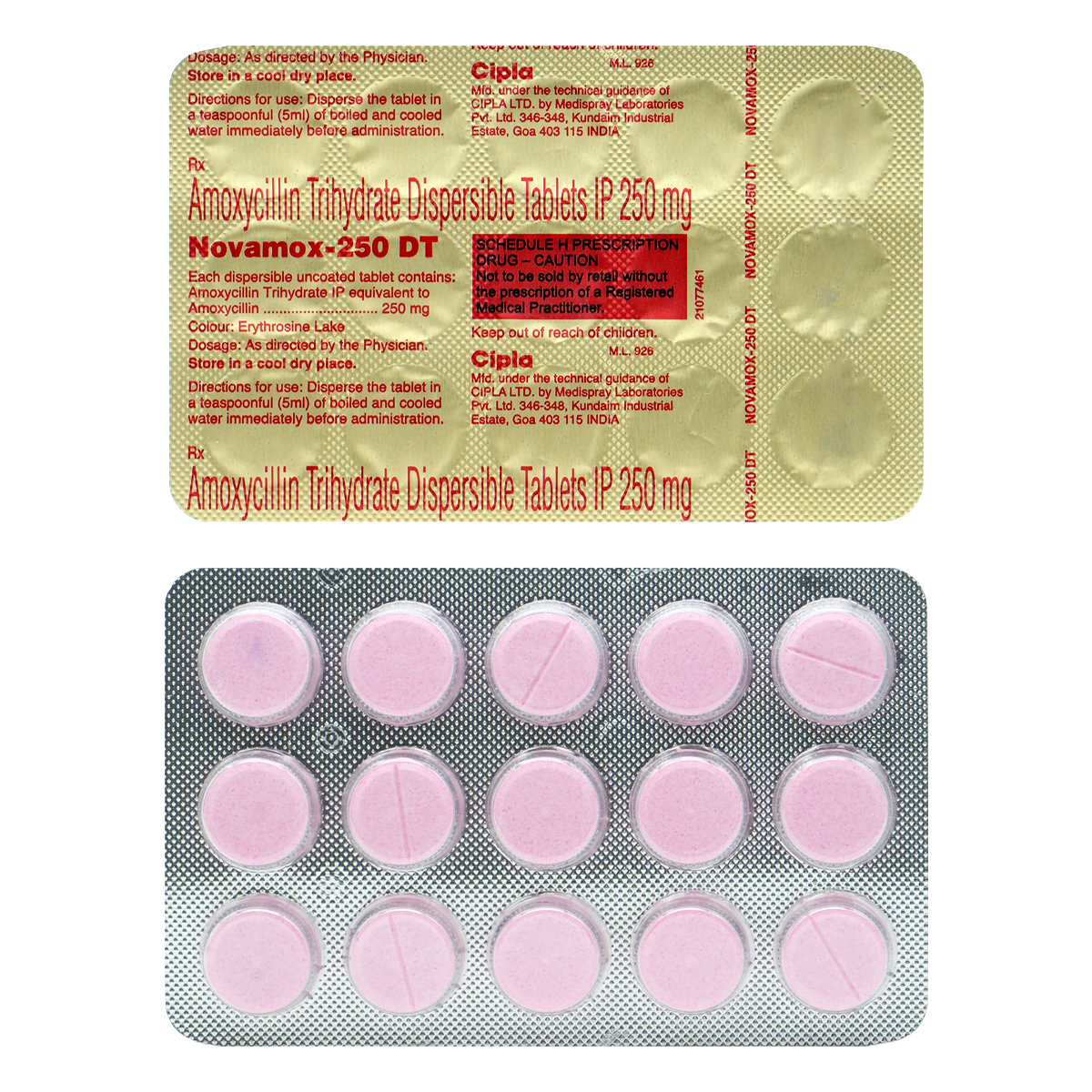ACMOX 250MG TABLET
MRP ₹125
(Inclusive of all Taxes)
₹18.8 Cashback (15%)
Provide Delivery Location
Online payment accepted
 Prescription drug
Prescription drugWhats That
Composition :
Manufacturer/Marketer :
Consume Type :
Expires on or after :
Return Policy :
NPPA :
About ACMOX 250MG TABLET
ACMOX 250MG TABLET belongs to a group of anti-bacterial or antibiotics known as penicillin. ACMOX 250MG TABLET is used to prevent and treat different types of bacterial infections like chest infections (pneumonia, bronchitis), ear/nose/throat (ENT) infections, urinary tract infections, skin infections, leg ulcers, gum ulcers, and dental infections, and pressure sores. Besides this, it is also used with various antibiotics like clarithromycin to treat stomach ulcers caused by H. Pyroli bacteria.
ACMOX 250MG TABLET has a similar method of killing bacteria as penicillin. ACMOX 250MG TABLET kills the bacterial cell by blocking the chemical (mucopeptides) released by the bacteria's outer layer (cell wall). In turn, ACMOX 250MG TABLET weakens and destroys the bacterial cell wall. It is a broad range of antibiotics that helps in fighting various types of bacteria.
ACMOX 250MG TABLET is available in oral tablets, capsules and syrup dosage forms. You should take the syrup form of ACMOX 250MG TABLET as your doctor advises. The tablet or capsule form of ACMOX 250MG TABLET should be swallowed whole with a glass of water. Do not crush, chew or break it. Most bacterial infections get treated within one week, while some conditions might take longer. So, it would be best if you tried to complete the prescribed dosage. During the treatment with ACMOX 250MG TABLET, you may observe some common side effects like feeling sick (nausea) and diarrhoea. But these side effects are usually in the initial phase and then resolve after some time. However, if these side effects persist, let your doctor know. Prolonged intake of the liquid form of ACMOX 250MG TABLET may cause temporary staining of teeth (especially in children) that can be removed by brushing.
To treat your condition effectually, continue using ACMOX 250MG TABLET for as long as your doctor has prescribed it. Do not use ACMOX 250MG TABLET without doctor's advice if you had a skin reaction or irritation to any medicine. Do not use ACMOX 250MG TABLET in more than prescribed doses or longer duration as it may cause adverse effects. Keep your doctor informed about your health condition and all the medicines you take before taking ACMOX 250MG TABLET to rule out any side effects. Do not discontinue or abruptly stop the medication as it may lead to antibiotic resistance, a condition in which bacteria become resistant to antibiotics.
Uses of ACMOX 250MG TABLET
Directions for Use
Key Benefits
ACMOX 250MG TABLET is a broad-spectrum antibiotic that helps treat various bacterial infections like ear, nose, or throat (ENT) infections, skin infections, genitourinary tract, and lower respiratory tract infections (LRTI) caused by susceptible bacteria. ACMOX 250MG TABLET is effective against gram-positive (S. pneumoniae) and gram-negative bacteria (E Coli, Haemophilus influenza, Neisseria gonorrhoea). Besides this, ACMOX 250MG TABLET also helps treat stomach ulcers caused by the H Pyroli bacteria. And if combined with antibiotics like clarithromycin and acidity, medicine like lansoprazole help reduce the symptoms of duodenum ulcer. ACMOX 250MG TABLET can be safely prescribed and well-tolerated among adults, children, pregnant and nursing mothers.
Storage
- Change positions or take a break from activity to relieve symptoms.
- Avoid postures that put a lot of pressure on just one area of the body.
- If you have vitamin deficiency, take supplements or change your diet.
- Exercise regularly like cycling, walking or swimming.
- Avoid sitting with your legs crossed.
- Clench and unclench your fists and wiggle your toes.
- Massage the affected area.
- Hydrate your body: Drink enough water to prevent dehydration and headaches.
- Calm Your Mind: Deep breathing and meditation can help you relax and relieve stress.
- Rest and Recharge: Sleep for 7-8 hours to reduce headache triggers.
- Take rest: lie down in a quiet, dark environment.
- Cold or warm compresses can help reduce tension.
- Stay Upright: Maintain good posture to keep symptoms from getting worse.
- To treat headaches naturally, try acupuncture or massage therapy.
- Over-the-counter pain relievers include acetaminophen and ibuprofen.
- Prescription Assistance: Speak with your doctor about more substantial drug alternatives.
- Severe Headaches: Seek emergency medical assistance for sudden, severe headaches.
- Frequent Headaches: If you get reoccurring headaches, consult your doctor.
- Headaches with Symptoms: Seek medical attention if your headaches include fever, disorientation, or weakness.
- Rest well; get enough sleep.
- Eat a balanced diet and drink enough water.
- Manage stress with yoga and meditation.
- Limit alcohol and caffeine.
- Physical activities like walking or jogging might help boost energy and make you feel less tired.
- Inform your doctor immediately if you experience a fever after starting a new medication.
- Your doctor may adjust your medication regimen or dosage as needed to minimize fever symptoms.
- Monitor your body temperature to monitor fever progression.
- Drink plenty of fluids, such as water or electrolyte-rich beverages, to help your body regulate temperature.
- Get plenty of rest and engage in relaxation techniques, such as deep breathing or meditation, to help manage fever symptoms.
- Under the guidance of your doctor, consider taking medication, such as acetaminophen or ibuprofen, to help reduce fever.
- If your fever is extremely high (over 103°F), or if you experience severe symptoms such as confusion, seizures, or difficulty breathing, seek immediate medical attention.
- Consult your doctor if you experience skin redness, itching, or irritation after taking medication.
- Your doctor may adjust your treatment plan by changing your medication or providing guidance on managing your erythema symptoms.
- Your doctor may recommend or prescribe certain medications to help alleviate symptoms.
- Apply cool compresses or calamine lotion to the affected skin area to reduce redness and itching.
- Stay hydrated by drinking plenty of water to help alleviate symptoms and keep your skin hydrated.
- Monitor your skin condition closely and promptly report any changes, worsening symptoms, or concerns to your healthcare provider.
- Take a balanced diet rich in protein, vitamins, and minerals.
- Increase calorie intake if necessary, especially for children with poor appetite.
- Engage in regular moderate-intensity exercise.
- Promote healthy movement patterns in children.
- Ensure adequate sleep duration by establishing a consistent sleep schedule.
- Practice relaxation techniques like deep breathing or meditation.
- Limit caffeine, alcohol and tobacco intake.
- If you experience or encounter any severe allergic reaction, stop using medication and consult the doctor right away.
- Tell your doctor about the allergic reaction, including the medication taken and any symptoms experienced.
- Your doctor will evaluate the severity of the reaction and determine the best course of action.
- To ensure a full recovery, follow your doctor's advice, attend scheduled follow-up appointments, and undergo recommended tests to monitor progress and adjust treatment as needed.
Drug Warnings
Serious allergic reactions may be reported in patients taking ACMOX 250MG TABLET, including raised itchy skin rashes, wheezing, chest tightness, and coughing. Taking ACMOX 250MG TABLET may cause antibiotic-induced diarrhoea in some cases. Penicillin antibiotics, blood thinners (warfarin, coumadin), uric acid-lowering drugs (allopurinol, probenecid), and anti-cancer or anti-arthritis drugs (methotrexate) may severely interact with ACMOX 250MG TABLET. Tell your doctor if you have chronic kidney disease or viral glandular fever (mononucleosis) before taking ACMOX 250MG TABLET. This medicine may lower the efficiency of oral birth control pills or contraceptive devices. An intake of ACMOX 250MG TABLET may alter some glucose urine tests like the copper reduction test report.
Drug-Drug Interactions
Drug-Drug Interactions
Login/Sign Up
Co-administration of Cisapride with Acmox 250mg Tablet can increase the risk of an irregular heart rhythm that may be serious.
How to manage the interaction:
Taking Acmox 250mg Tablet with Cisapride lead to an interaction, please consult a doctor before taking it. Consult a doctor immediately if you experience any symptoms such as dizziness, lightheadedness, fainting, or fast or pounding heartbeats. Do not discontinue the medications without consulting a doctor.
Co-administration of Acmox 250mg Tablet with Dofetilide may increase the risk of irregular heart rhythm.
How to manage the interaction:
Although there is a possible interaction between Acmox 250mg Tablet and Dofetilide, you can take these medicines together if prescribed by a doctor. If you develop sudden dizziness, lightheadedness, fainting, or fast or pounding heartbeats during treatment with dofetilide, contact a doctor immediately. Also, inform a doctor if you experience signs of electrolyte disturbance such as weakness, tiredness, drowsiness, confusion, muscle pain, cramps, nausea, or vomiting. Do not discontinue the medication without consulting a doctor.
Coadministration of Aspirin with Acmox 250mg Tablet may cause side effects.
How to manage the interaction:
Although there is a possible interaction between aspirin and Acmox 250mg Tablet, you can take these medicines together if prescribed by a doctor. However, if you experience symptoms such as ringing in your ears, headache, nausea, vomiting, dizziness, confusion, hallucinations, or rapid breathing, fever, and seizure, please contact a doctor. Do not stop using any medications without talking to a doctor.
Co-administration of Acmox 250mg Tablet with Topiramate may increase the risk of metabolic acidosis (elevated levels of acid in the blood) and kidney stone formation.
How to manage the interaction:
Although there is a possible interaction between Acmox 250mg Tablet and Topiramate, you can take these medicines together if prescribed by a doctor. If you experience symptoms of metabolic acidosis such as tiredness, loss of appetite, irregular heartbeat, trouble thinking clearly, and rapid breathing, contact a doctor immediately. Also, if you experience signs or symptoms of kidney stones, such as sudden back pain, abdominal pain, and blood in the urine, or if you have decreased sweating or a fever, contact your doctor immediately. Do not stop using any medications without consulting a doctor.
Co-administration of Acmox 250mg Tablet with Pimozide may increase the risk of irregular heart rhythm.
How to manage the interaction:
Although there is a possible interaction between Acmox 250mg Tablet and Pimozide, you can take these medicines together if prescribed by a doctor. If you develop sudden dizziness, lightheadedness, fainting, or fast or pounding heartbeats during treatment with pimozide, contact a doctor immediately. Also, inform your doctor if you experience signs of electrolyte disturbance such as weakness, tiredness, drowsiness, confusion, muscle pain, cramps, nausea, or vomiting. Do not discontinue the medication without consulting a doctor.
Co-administration of Acmox 250mg Tablet with Dronedarone may increase the risk of irregular heart rhythm.
How to manage the interaction:
Although there is a possible interaction between Acmox 250mg Tablet and Dronedarone, you can take these medicines together if prescribed by a doctor. If you develop sudden dizziness, lightheadedness, fainting, or fast or pounding heartbeats during treatment with Dronedarone, contact a doctor immediately. Also, inform your doctor if you experience signs of electrolyte disturbance such as weakness, tiredness, drowsiness, confusion, muscle pain, cramps, nausea, or vomiting. Do not discontinue the medication without consulting a doctor.
Co-administration of Acmox 250mg Tablet with Ziprasidone may increase the risk of irregular heart rhythm.
How to manage the interaction:
Although there is an interaction between Acmox 250mg Tablet and Ziprasidone, they can be taken together if prescribed by a doctor. If you develop sudden dizziness, lightheadedness, fainting, contact a doctor immediately. Do not discontinue any medication without talking to a doctor.
Taking Acmox 250mg Tablet with Arsenic trioxide may increase the risk of an irregular heart rhythm that may be serious.
How to manage the interaction:
Co-administration of Acmox 250mg Tablet with Arsenic trioxide can possibly result in an interaction, but it can be taken if doctor has advised it. If you have any of these symptoms, it's important to contact a doctor right away: feeling dizzy or lightheaded, fainting, having a fast or pounding heartbeat, feeling weak or drowsy, being confused, experiencing muscle pain, or feeling nauseous or vomiting. Do not discontinue any medications without consulting a doctor.
Co-administration of Acmox 250mg Tablet together with Salsalate can cause ringing in your ears, headache, nausea, vomiting, dizziness, confusion, hallucinations, rapid breathing, fever, seizure (convulsions).
How to manage the interaction:
There may be a possibility of interaction between Acmox 250mg Tablet and Salsalate, but it can be taken if prescribed by a doctor. If you have any of these symptoms, like ringing in your ears, headache, feeling sick, throwing up, feeling dizzy, feeling confused, breathing fast, having a fever, or having a seizure, make sure to call a doctor right away. Do not stop using any medications without talking to a doctor.
Coadministration of amiodarone with Acmox 250mg Tablet may raise the risk of an abnormal heart rhythm.
How to manage the interaction:
Even though Amiodarone and Acmox 250mg Tablet interact, they can be used if prescribed by a doctor. If you have heart issues or electrolyte imbalances, you may be at higher risk. If you experience sudden dizziness, lightheadedness, fainting, shortness of breath, weakness, drowsiness, confusion, muscle pain, nausea, vomiting, or rapid heartbeat, get medical attention. Do not discontinue any medications without consulting a doctor.
Drug-Food Interactions
Drug-Food Interactions
Login/Sign Up
Diet & Lifestyle Advise
- After taking the full course of ACMOX 250MG TABLET, probiotics should be taken to restore some of the healthy bacteria in the intestine that may have been killed. Taking probiotics after antibiotic treatment can reduce the risk of antibiotic-associated diarrhoea. Certain fermented foods like yoghurt, cheese, sauerkraut and kimchi can restore the intestine's good bacteria stink.
- Include more fibre-enriched food in your diet, as it can be easily digested by gut bacteria which helps stimulate their growth. Thus fibre foods may help restore healthy gut bacteria after taking a course of antibiotics. Whole grains like whole-grain bread, and brown rice, should be included in your diet.
- Avoid taking too many calcium-enriched foods and drinks as it might affect the working of ACMOX 250MG TABLET.
- Avoid intake of alcoholic beverages with ACMOX 250MG TABLET as it can make you dehydrated and affect your sleep. This can make it harder for your body to aid the ACMOX 250MG TABLET in fighting off infections.
Side Effects of ACMOX 250MG TABLET
- Feeling sick (nausea)
- Diarrhoea
Habit Forming
Therapeutic Class
All Substitutes & Brand Comparisons
RX
Out of StockGermox Kid 250mg Tablet
Zydus Cadila
₹13
(₹1.17 per unit)
89% CHEAPERRX
Out of StockGreemox 250mg Tablet
₹24
(₹2.16 per unit)
80% CHEAPERRX
Out of StockAmokid 250mg Tablet
Pfizer Ltd
₹34
(₹3.06 per unit)
72% CHEAPER
Author Details
We provide you with authentic, trustworthy and relevant information
Drug-Diseases Interactions
Drug-Diseases Interactions
Login/Sign Up
The use of carbonic anhydrase inhibitors may rarely cause bone marrow suppression and blood dyscrasias at recommended dosages.
How to manage the interaction:
Acmox 250mg Tablet should be used with caution in patients with aplastic anemia ( body stops producing enough new blood cells), thrombocytopenia (low number of platelets in the blood) or thrombocytopenia purpura (low levels of platelets that prevent bleeding), leukopenia (low white blood cells in blood), agranulocytosis (extremely low levels of white blood cells), and hemolytic anemia (red blood cells are destroyed faster than they can be replaced). A baseline CBC and platelet count is recommended, as well as monitoring at regular intervals during therapy.
The use of carbonic anhydrase inhibitors is contraindicated in patients with adrenal insufficiency.
How to manage the interaction:
It should be used with extreme caution in patients with adrenal insufficency (adrenal glands don't make enough hormone, cortisol) and monitoring of electrolyte levels is recommended.
The use of carbonic anhydrase inhibitors is contraindicated in patients with closed-angle glaucoma.
How to manage the interaction:
It should be used with extreme caution in glaucoma patients.
The use of carbonic anhydrase inhibitors is contraindicated in patients with hypokalemia .
How to manage the interaction:
If you have symptoms such as constipation, extreme tiredness, muscle damage, tingling or numbness, contact your doctor immediately.
The use of carbonic anhydrase inhibitors is contraindicated in patients with hyponatremia .
How to manage the interaction:
If you have symptoms such as headache, confusion, nausea, vomiting, muscle weakness or cramps, extreme tiredness or restlessness, contact your doctor immediately.
The use of some carbonic anhydrase inhibitors is contraindicated in patients with severe kidney disease.
How to manage the interaction:
If you have symptoms such as pain, difficulty or discomfort while urinating, bad-smelling urine, cloudy or foamy urine, low back pain on one side, loss of appetite , flank pain between ribs and hips and fever not caused by an infection and that does not go away, contact your doctor immediately.
The use of carbonic anhydrase inhibitors is contraindicated in patients with marked liver disease or cirrhosis.
How to manage the interaction:
It should be used with extreme caution in patients with mild to moderate liver disease, as clearance of the drug may be decreased. A dose reduction might be needed, and monitoring of the liver function is recommended.
carbonic anhydrase inhibitors should be administered cautiously in patients with respiratory acidosis
How to manage the interaction:
It should be used with caution in patients with respiratory acidosis and in conditions such as emphysema (lung disease that causes shortness of breath), pulmonary obstruction, etc. Respiratory status should be monitored during therapy.
Carbonic anhydrase inhibitor anticonvulsants should be administered cautiously in patients with reduced renal dysfunction.
How to manage the interaction:
It should be used with caution in patients with reduced kidney function and a dose adjustment may be required based on the level of impairment.
carbonic anhydrase inhibitors should be administered cautiously in patients with diabetes mellitus.
How to manage the interaction:
It should be used with caution in diabetic patients, and regular monitoring of blood glucose levels is recommended during therapy.
carbonic anhydrase inhibitors should be administered cautiously in patients with gout.
How to manage the interaction:
It should be used with caution in patients with gout and monitoring of uric acid levels is recommended.
carbonic anhydrase inhibitors should be administered cautiously in patients with metabolic or hyperchloremic acidosis
How to manage the interaction:
Acmox 250mg Tablet should be used with caution in patients with metabolic or hyperchloremic acidosis or with conditions that lead to acidosis (renal disease, severe respiratory disorders, diarrhea).
FAQs
Drug-Drug Interactions Checker List
- WARFARIN
- COUMADIN
- ALLOPURINOL
- PROBENECID
- METHOTREXATE
Disease/Condition Glossary
Bacterial infections: A bacterial infection is a condition in which harmful bacteria enter, multiply, and infect our body. It can target any body part and multiple very quickly. When you get infected with bacteria, you can experience generalized symptoms like fevers, chills, and fatigue. Bacteria are of various forms comprising commonly spherical, rod, and spiral-shaped. Bacterial infections vary from minor illnesses like sore throat and ear infections to severe brain infections like meningitis and encephalitis. Few harmful bacteria that cause infections include Streptococcus, Staphylococcus, and E. coli. Anyone can become infected with a bacterial infection. But, people with weak immune systems or taking immunosuppressive medicine can make you more prone to bacterial infection.

Have a query?
Alcohol
Safe if prescribed
Do not drink too much while taking this medicine. Drinking a lot of alcohol may more likely to drowsiness, dizziness or sleepiness side effects.
Pregnancy
Consult your doctor
ACMOX 250MG TABLET is a pregnancy category B drug. So, ACMOX 250MG TABLET can be safely taken by pregnant women if prescribed by the doctor.
Breast Feeding
Consult your doctor
Can safely give ACMOX 250MG TABLET to breastfeeding mothers.
Driving
Safe if prescribed
You may have side effects like dizziness after taking ACMOX 250MG TABLET that may make you unfit to drive. So, it is advisable not to drive or operate machinery until you are feeling well.
Liver
Consult your doctor
ACMOX 250MG TABLET can be safely taken in case of liver disease if prescribed by the doctor. Your doctor will weigh the benefits and any potential risks before prescribing ACMOX 250MG TABLET.
Kidney
Consult your doctor
Take ACMOX 250MG TABLET with caution if you have severe kidney disease. Your doctor may reduce the dose of ACMOX 250MG TABLET in patients with severe renal impairment (GFR less than 30 mL/min).
Children
Safe if prescribed
Can be ACMOX 250MG TABLET safely to children, dose to be adjusted and recommended by a child specialist only.





